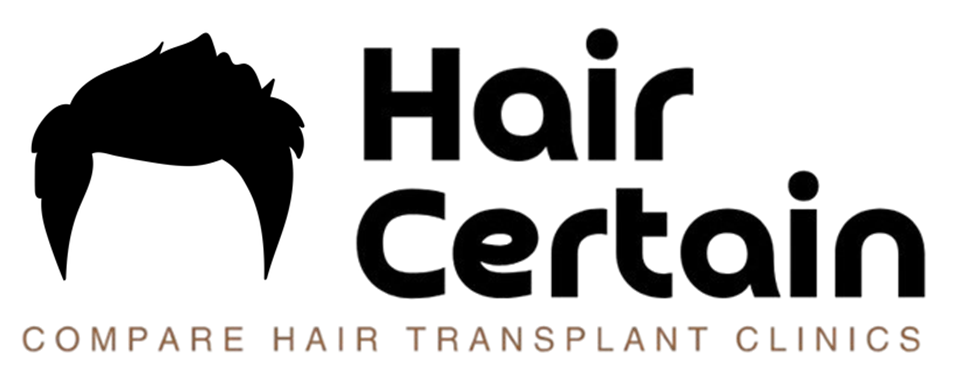What is a FUT Hair Transplant?
When it comes to hair restoration, several techniques have emerged over the years to help individuals regain their confidence and achieve a fuller head of hair. One such technique is the Follicular Unit Transplantation (FUT) method. FUT stands out as one of the most established and effective hair transplant methods. Known for delivering dense, natural-looking results, FUT remains a preferred option for those experiencing significant hair thinning or baldness.
This guide provides a detailed overview of FUT hair transplants, ensuring potential patients have a comprehensive understanding of the subject and procedure.
Comprehensive Guide to FUT Hair Transplants
- Hair Certain Canada
- 13 minutes
Table of Contents
What is FUT (Follicular Unit Transplantation) Hair Transplant?
FUT, also known as the strip method, involves removing a thin strip of scalp tissue from the back or sides of the head, where hair is usually denser and genetically resistant to hair loss. The harvested strip is then dissected under a microscope to extract individual hair follicles, which are implanted into the thinning or balding areas.
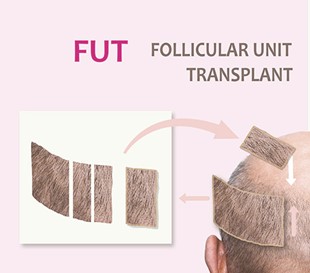
History of Follicular Unit Transplantation (FUT) Hair Transplants
The concept of hair transplantation dates back to the 1950s, but it wasn’t until the 1990s that the FUT method gained popularity. Dr. Robert Bernstein and Dr. William Rassman were pioneers in refining this technique, making it a gold standard in hair restoration.
Advantages and Key Features of FUT Hair Transplants
High Graft Yield: FUT allows for a large number of grafts to be harvested in a single session, making it suitable for extensive hair restoration
Dense Coverage: Particularly suitable for patients looking to cover a large area of baldness.
Natural Results: Skilled surgeons ensure that transplanted hair blends seamlessly with existing hair.
No Shaving Required: Unlike some other techniques, FUT doesn’t require shaving the donor area, which can be beneficial for those who prefer to keep their hair longer
Graft Quality: The strip method often results in higher-quality grafts with better survival rates
Efficient Procedure: FUT typically has a shorter surgery time compared to other techniques, such as Follicular Unit Extraction (FUE)
Cost-Effective: In many cases, FUT is more affordable than FUE, especially for larger transplant areas
Potential Drawbacks of FUT Hair Transplants
Linear Scar: The most significant drawback of FUT is the linear scar left in the donor area. While this can usually be concealed by surrounding hair, it may be visible with very short hairstyles
Longer Recovery Time: The strip incision typically requires more healing time compared to FUE
Post-Operative Discomfort: Patients may experience more discomfort in the donor area following FUT compared to FUE
Limited Donor Area: The strip method can only harvest from a specific area of the scalp, which may limit options for future procedures if needed.
FUT Hair Transplant Procedure: Step-by-Step
Step 1: Pre-Procedure Consultation
Before undergoing a FUT hair transplant, patients will have a consultation with a qualified hair transplant surgeon. During this consultation, the surgeon will assess the patient’s hair loss pattern, donor hair availability, and overall health to determine if they are a suitable candidate for the procedure.
Step 2: Preparation
Before surgery, patients are advised to avoid alcohol, smoking, and certain medications that could affect blood flow or healing.
Step 3: Day of Surgery
On the day of the surgery, the patient will be given local anesthesia to numb the donor and recipient areas. The procedure typically takes between 4 to 8 hours, depending on the number of grafts required.
Step 4: Donor area preparation & Local Anesthesia
The surgeon will first prepare the donor area by trimming the hair short. This allows for a clear view of the scalp and ensures precise removal of the strip of hair-bearing skin.
The scalp is numbed using local anesthesia to ensure a painless experience throughout the procedure.
Step 5: Strip Extraction
A strip of skin, usually about 1 to 1.5 cm wide and several inches long, is carefully removed from the donor area. The donor area is then sutured closed, leaving a linear scar that will be hidden by the surrounding hair.
Step 6: Microscopic Dissection
The removed strip is then dissected under a microscope into individual follicular units, each containing 1 to 4 hair follicles. This step is crucial for ensuring the survival and growth of the transplanted hair.
Step 7: Preparing the Recipient Area
Tiny incisions are made in the recipient area where the grafts will be placed. The surgeon will consider the natural hair growth pattern to ensure a natural-looking result.
Step 8: Graft Implantation
The dissected follicular units are carefully placed into the incisions in the recipient area. This step requires precision and expertise to ensure the grafts are placed at the correct angle and density.
Step 9: Post-Procedure Care
Patients are provided with aftercare instructions to promote healing and maximize the survival rate of the transplanted follicles.
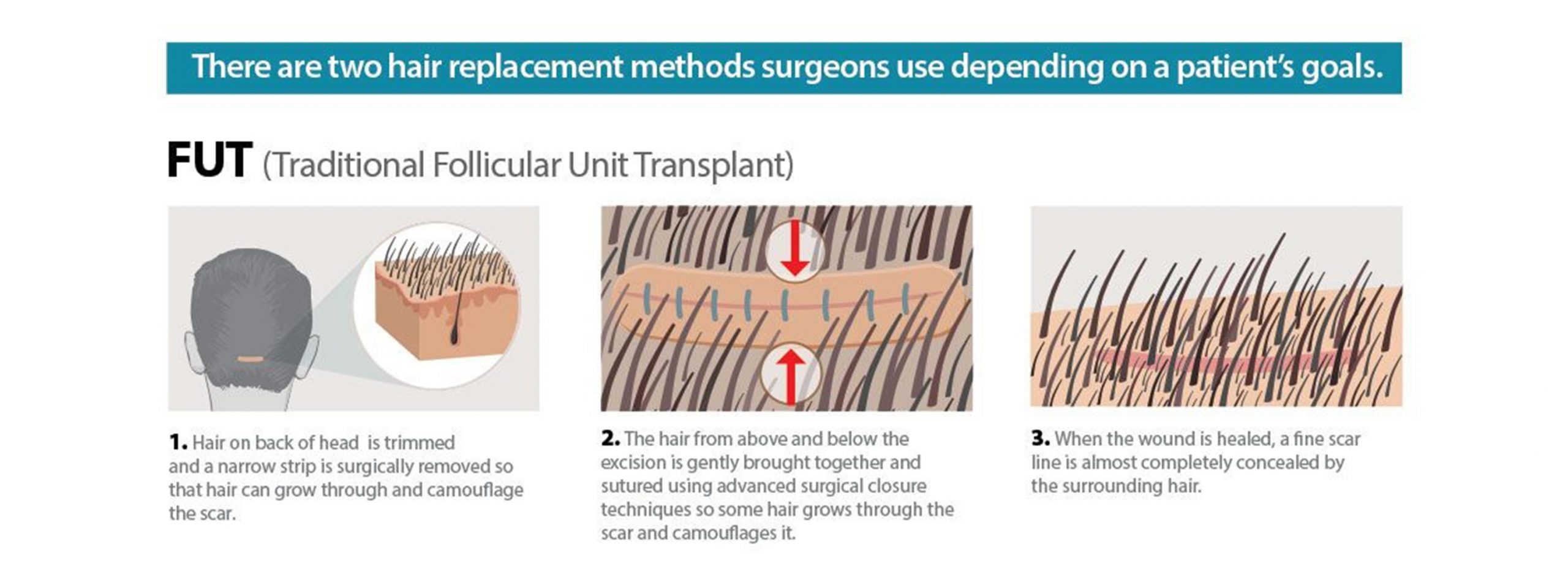
FUT Hair Transplant Recovery Process
While individual results may vary, patients can generally expect the following timelines:
Immediate Aftercare: After the procedure, the patient will receive detailed instructions on how to care for their scalp. This includes avoiding touching the grafts, keeping the scalp clean, and taking prescribed medications to reduce swelling and prevent infection.
Days 1-3: Patients may experience mild discomfort, swelling, and redness in the donor and recipient areas. Pain medication can be taken to manage discomfort.
Days 4-7: The transplanted area may develop scabs, which should not be picked at. The donor area stitches will be removed, usually around the 10-day mark.
Weeks 2-4: Some of the transplanted hairs may fall out, which is a normal part of the shedding phase.
Months 3-6: New hair growth will start to become noticeable. Patients should avoid strenuous activities that may impact the healing process.
Months 9-12: The full results of the FUT hair transplant will become apparent, with significant hair growth and improved density.
It’s important to note that hair transplantation does not stop the progression of hair loss. Some patients may require additional procedures in the future to maintain their results.
Who is a Suitable Candidate for FUT Hair Transplants?
Not everyone is suited for FUT hair transplantation. The best candidates include:
Extensive Hair Loss: FUT is ideal for patients with extensive hair loss who require a larger number of grafts.
Good Donor Hair Density: Patients with good donor hair density at the back of the head are suitable candidates for FUT.
No Preference for Short Hairstyles: Patients who do not mind having a linear scar and prefer longer hairstyles are good candidates for FUT.
Potential Risks and Side Effects
While FUT is a safe procedure, there are potential side effects:
- Scarring: A linear scar is left at the donor site, although it’s usually well-concealed.
- Infection: Rare but possible if post-operative care instructions are not followed.
- Swelling and Discomfort: Mild swelling and discomfort around the scalp may occur but usually subside within a week.
- Shock Loss: Temporary shedding of transplanted hair, which regrows over time.
Cost of FUT Hair Transplant: Factors to Consider
The cost of an FUT hair transplant can vary depending on several factors:
- Location: The cost can differ significantly between countries and cities.
- Experience of the Surgeon: Highly experienced surgeons may charge a premium for their expertise. In fact, many clinics use technicians to do much of the work, which significantly reduces costs but ads to disadvantages and quality control.
- Number of Grafts: The total number of grafts needed to achieve the desired results influences the overall cost.
- Clinic Reputation: Reputable clinics with state-of-the-art technology may have higher fees.
On average, the cost of an FUT procedure can range from $4,000 to $18,000. It’s essential to consider not just the cost but also the quality and safety of the clinic.
Please review our guide on Hair Transplant costs in Canada
Finding a Qualified Surgeon
Selecting the right surgeon is crucial for a successful FUE hair transplant. Here are some tips for finding a qualified professional:
- Credentials: Ensure the surgeon is certified, in good standing and specializes in hair restoration.
- Experience: Look for a surgeon with extensive experience
- Positive Reviews: Now a days, it is easy to review google, yelp or other medical portal reviews to determine what patients have to say about their experience.
- Before and After Photos: Review before and after photos of previous patients to assess the surgeon’s skill.
- Ask to speak with prior patience: Ask the clinic to provide you with a number of patients you can call yourself.
- Consultation: Schedule a consultation to discuss your goals and evaluate the surgeon’s approach.
What Is the Difference Between FUT and FUE Hair Transplants?
While FUT and FUE (Follicular Unit Extraction) are both effective hair transplant methods, they have distinct differences:
- FUE involves extracting individual hair follicles, which minimizes scarring and recovery time.
- FUT involves removing a strip of scalp from the donor area and dissecting it into individual grafts. This method may leave a linear scar but can be more efficient for large areas of hair loss.
Harvesting Technique
- FUT: Involves removing a strip of skin from the donor area.
- FUE: Involves individually extracting follicular units using a small punch tool.
Scarring
- FUT: Leaves a linear scar at the donor site.
- FUE: Leaves tiny, dot-like scars that are less noticeable.
Recovery Time
- FUT: Longer recovery time due to the sutures and linear scar.
- FUE: Shorter recovery time with minimal discomfort.
Graft Yield
- FUT: Higher graft yield in a single session.
- FUE: May require multiple sessions to achieve the same number of grafts as FUT.
Cost of FUT vs FUT
- FUT: Lower average cost.
- FUE: Higher average cost.
Is FUT Hair Transplant Right for You?
Follicular Unit Transplantation (FUT) is a well-established and effective hair restoration technique that can provide natural-looking results for many individuals experiencing hair loss. While it does involve a more invasive harvesting method compared to some alternatives, its ability to transplant a large number of grafts in a single session makes it an attractive option for those with extensive hair loss.
As with any medical procedure, it’s crucial to thoroughly research and consult with qualified professionals to determine if FUT is the right choice for your individual needs and goals. With proper planning, skilled execution, and diligent post-operative care, FUT can be a life-changing solution for those seeking to restore their hair and confidence.
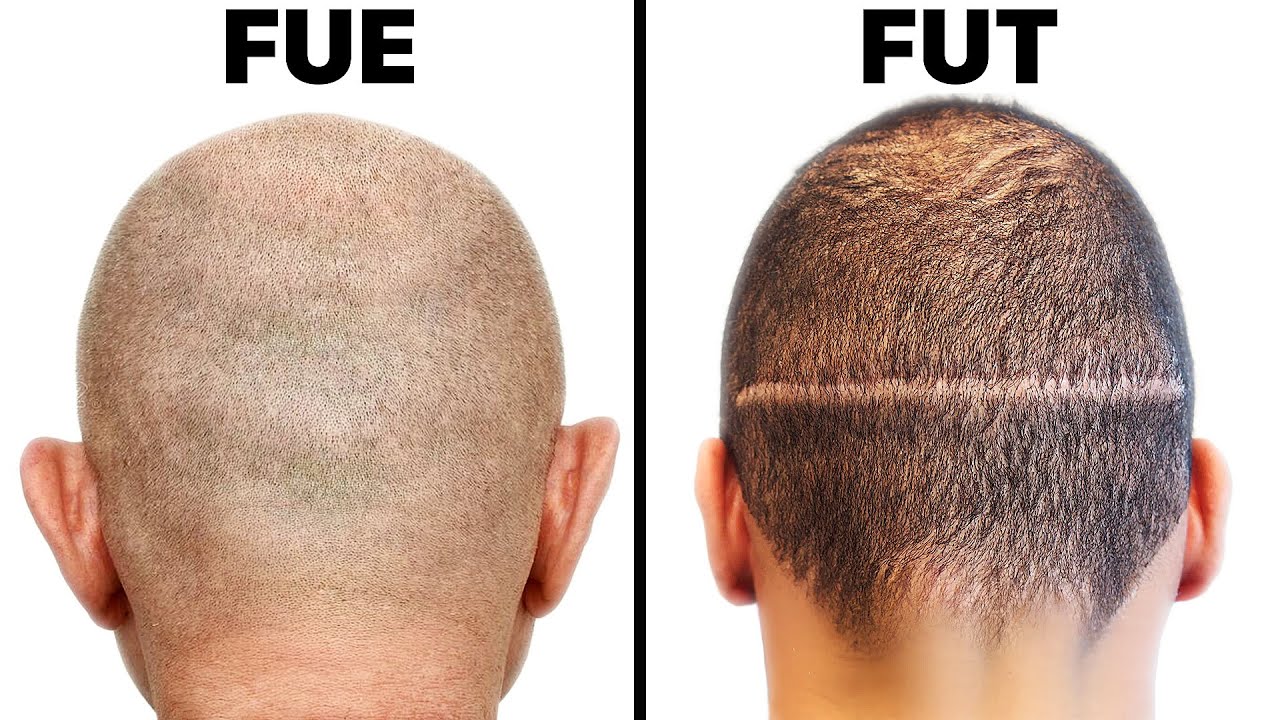
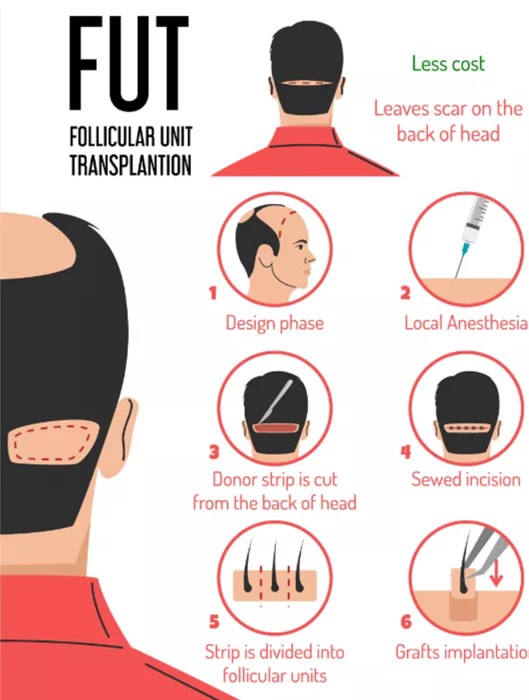
FUT Frequency Asked Questions
A Follicular Unit Transplantation (FUT) hair transplant involves removing a strip of skin from the donor area (usually the back of the head) and dissecting it into individual follicular units to be transplanted into the balding or thinning areas.
FUT involves removing a strip of skin, while Follicular Unit Extraction (FUE) involves extracting individual follicular units directly from the donor area without removing a strip of skin.
Both procedures involve local anesthesia, making them relatively painless. However, FUT may have a longer recovery due to the incision.
Yes, FUT hair transplants are considered permanent. The transplanted hair follicles are resistant to hair loss and continue to grow naturally in their new location.
The FUT procedure typically takes between 4 to 8 hours, depending on the number of grafts required.
Patients receive local anesthesia, so the procedure itself is not painful. Some discomfort may be experienced during the recovery period.
Recovery time varies but generally takes about 10 to 14 days for the initial healing of the donor and recipient areas. Full recovery may take a few months.
Yes, a linear scar will be left at the donor site where the strip of skin was removed. However, it is usually hidden by surrounding hair.
Most patients can return to non-strenuous work within a week, but it may take longer if your job involves physical activity.
New hair growth typically begins around 3 to 4 months after the procedure, with full results visible around 9 to 12 months.
Common risks include infection, bleeding, swelling, and scarring. It's important to follow post-operative care instructions to minimize these risks.
The cost varies depending on factors such as the number of grafts required and the surgeon's expertise. It can range from $4,000 to $18,000 or more.
Ideal candidates have good donor hair density, do not mind having a linear scar, and require a large number of grafts.
Yes, women can undergo FUT hair transplants if they have adequate donor hair and are experiencing hair loss.
It depends on the extent of your hair loss and your desired results. Some patients may require multiple sessions to achieve their goals.
Yes, FUT can be combined with other treatments such as PRP (Platelet-Rich Plasma) therapy or medications like minoxidil and finasteride.
Look for certified surgeons with extensive experience in hair restoration, positive patient reviews, and before-and-after photos of past procedures.
Follow your surgeon's pre-operative instructions, which may include avoiding certain medications, refraining from smoking, and arranging for transportation on the day of surgery.
During the consultation, the surgeon will assess your hair loss, discuss your goals, review your medical history, and determine if you are a suitable candidate for FUT.
No, only the donor area will be trimmed short to facilitate the removal of the strip. The rest of your hair can remain long.
Yes, experienced surgeons use advanced closure techniques to minimize the visibility of the linear scar. Additionally, surrounding hair can help conceal it.
Yes, when performed by a skilled surgeon, the transplanted hair will look natural and blend seamlessly with your existing hair.
Yes, FUT can be performed on people with curly hair, but it's important to choose a surgeon experienced in working with different hair types.
Follow your surgeon's post-operative care instructions, which may include gentle washing, avoiding direct sunlight, and taking prescribed medications.
Avoid strenuous activities, smoking, and excessive alcohol consumption during the recovery period to ensure optimal healing and results.
You can color and style your hair once the transplanted area has fully healed, usually after a few months. Consult your surgeon for specific recommendations.
Some of the transplanted hair may fall out within the first few weeks, which is a normal part of the shedding phase. New hair growth will follow.
Follow a healthy lifestyle, use recommended hair care products, and consider additional treatments such as PRP therapy or medications to maintain the results.
You can wear a loose-fitting hat to protect your scalp, but avoid tight hats that may put pressure on the grafts.
Consult with your surgeon and primary care physician to determine if you are a suitable candidate, as certain medical conditions may affect your eligibility.
Yes, some patients opt for a combination of both methods to achieve optimal coverage.
